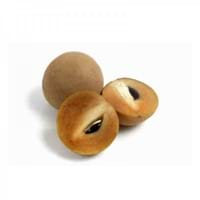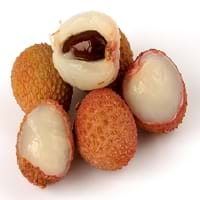Health Benefits
Anti-inflammatory properties, Arthritis treatment, Regulates Blood Sugar, Unknown
Cancer prevention, Cures gastro-intestinal troubles, Heart care, Muscle pain relief, Prevents blindness from diabetes
General Benefits
Boosts immune system, Controls blood sugar levels, Digestive aid
Boosts immune system, Digestive aid, Fights against infections, Helps in weight loss, Maintains healthy cholesterol level, Strengthens bones
Skin Benefits
Nourishes skin, Protects skin from oxidative stress
Anti-aging benefits, Skin rejuvenation
Hair Benefits
Prevents hair loss, Promotes longer and healthier hair, Regulates hair growth
Promotes longer and healthier hair, Protects hair
Allergy Symptoms
Asthma, Red rash, Swelling of mouth, tongue or lips
Coughing, Diarrhea, Headaches, Hives, Itching, Labored Breathing, Nausea, Runny nose, Swelling of mouth, tongue or lips, Vomiting, Watery eyes
Side Effects
Diarrhoea, Vomiting
May cause abdominal pain, Diarrhoea, Mouth irritation, Throat irritation, Weight gain
Best Time to Eat
As a snack in the late afternoon
As a snack in the late afternoon, Don't consume at night and before bed, Eat the fresh ones, avoid mixing with any other foods, don't eat after meal., Morning time (before lunch), Strictly avoid empty stomach
Vitamin B5 (Pantothenic Acid)
Vitamin C (Ascorbic Acid)
Vitamin E (Tocopherole)
Not Available
Vitamin K (Phyllochinone)
Not Available
Lutein+Zeaxanthin
Not Available
Calories in Fresh Fruit with Peel
Not Available
Calories in Fresh Fruit without Peel
Not Available
Calories in Juice
Not Available
Calories in Jam
Not Available
Calories in Pie
Not Available
Type
Berry
Tree fruit, Tropical
Season
Winter
Spring, Summer
Varieties
Bush Table Queen, Heirloom Table Queen, Festival Hybrid, Early Acorn Hybrid, Table Ace, Ebony and Cream of the Crop
Emperor fruit, Mauritiu, Sweet Heart, Brewster, Haak Yip and Bengal
Seedless Variety
Not Available
No
Color
Dark green, Green-yellow, Orange green
Bright red, Pink red
Inside Color
Not Available
Greyish-white
Taste
Sweetish
Crunchy, Juicy, Sweet
Origin
Central America, North America, Unknown
China, Indonesia, Philippines, Vietnam
Soil Type
Well-drained
Alluvial, Loam, Well-drained
Climatic Conditions
Cold, Sunny
Absence of strong wind, Cold, Dry, Without frosts
Facts about
- It was named as Acorn Squash for its resemblance to a large ribbed acorn.
- It is said that squash was being grown in Mexico as long as 10,000 years ago.
- It was the first food cultivated by native American Indians.
- The seed of Lychee fruit is toxic & can adversely affect the digestive system.
- This fruit gives a smoky flavor when eaten dried.
- This fruit is a symbol of love and romance in China.
Spirits
Not Available
Yes
Cocktails
Not Available
Yes
Other Countries
Egypt, India, Iran, Italy, Mexico, Russia, Turkey, Ukraine, United States of America
Australia, India, South Africa, Thailand, United States of America
Top Importer
UAE
Hong Kong
Botanical Name
Cucurbita Pepo
Litchi chinensis
Synonym
Winter Squash
Nephelium litchi
Subkingdom
Tracheobionta
Tracheobionta
Division
Magnoliophyta
Magnoliophyta
Class
Magnoliopsida
Magnoliopsida
Subclass
Dillenhidae
Rosidae
Order
Cucurbitales
Sapindales
Family
Cucurbitaceae
Sapindaceae
Species
Pepo
L. chinensis
Generic Group
Not Available
Soapberry
Difference Between Sapota and Lychee
We might think that Sapota and Lychee are similar with respect to nutritional value and health benefits. But the nutrient content of both fruits is different. Sapota and Lychee Facts such as their taste, shape, color, and size are also distinct. The difference between Sapota and Lychee is explained here.
The amount of calories in 100 gm of fresh Sapota and Lychee with peel is 40.00 kcal and Not Available and the amount of calories without peel is Not Available and 66.00 kcal respectively. Thus, Sapota and Lychee belong to Low Calorie Fruits and Low Calorie Fruits category.These fruits might or might not differ with respect to their scientific classification. The order of Sapota and Lychee is Cucurbitales and Sapindales respectively. Sapota belongs to Cucurbitaceae family and Lychee belongs to Sapindaceae family. Sapota belongs to Cucurbita genus of Pepo species and Lychee belongs to Litchi genus of L. chinensis species. Beings plants, both fruits belong to Plantae Kingdom.









